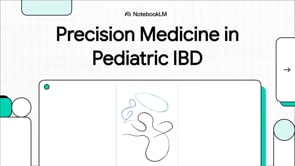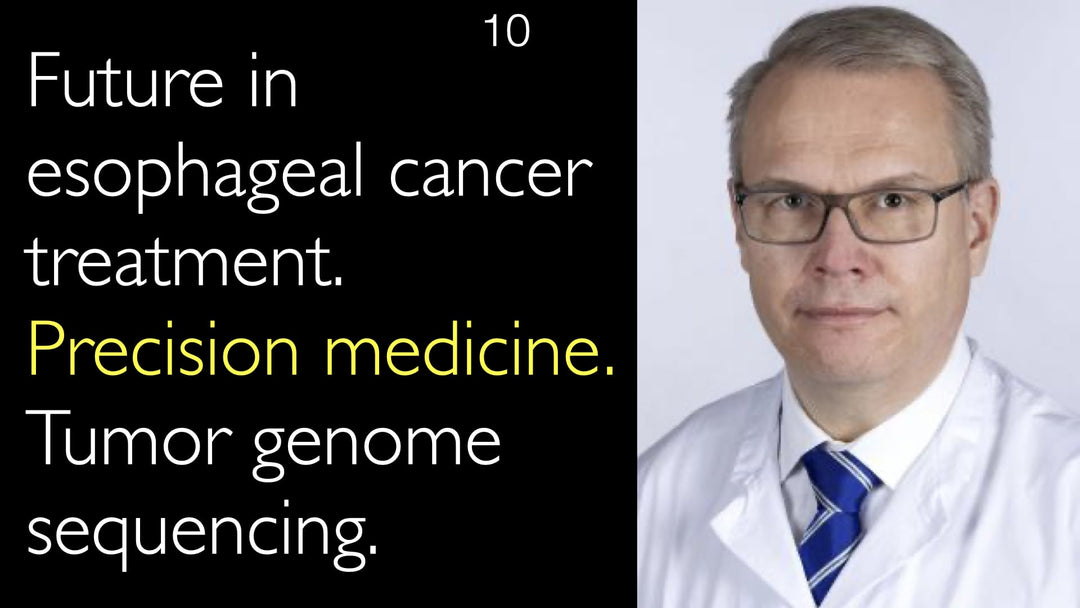Precision medicine is revolutionizing care for children with inflammatory bowel disease (IBD) by using individual patient data to select the right therapy at the right dose and time. This comprehensive approach combines genetic, microbial, and protein biomarkers to predict disease severity and treatment response, aiming to break through the current therapeutic ceiling where only 20-50% of patients achieve remission. By enabling earlier, more targeted interventions and even exploring prevention strategies, precision medicine offers new hope for reducing complications, surgeries, and long-term disability in pediatric IBD.
A Patient's Guide to Precision Medicine in Pediatric Inflammatory Bowel Disease
Table of Contents
- Introduction: Why Precision Medicine Matters for Pediatric IBD
- Right Patient: Identifying Who Needs Aggressive Treatment
- Clinical and Laboratory Predictors
- Serologic Markers
- Genetic Risk Factors
- Protein Biomarkers
- Gene Expression Patterns
- Gut Microbiome Factors
- Clinical Decision Support Tools
- Right Therapy: Matching Treatments to Patient Profiles
- Anti-TNF Therapies
- Anti-Integrin Therapies
- IL-12/IL-23 Therapies
- Pharmacogenomics: Genetics and Medication Safety
- Right Dose: Optimizing Medication Levels
- Therapeutic Drug Monitoring
- Conclusion: The Future of Precision IBD Care
- Source Information
Introduction: Why Precision Medicine Matters for Pediatric IBD
Inflammatory bowel disease (IBD), including Crohn's disease and ulcerative colitis, has been increasing worldwide since the industrial revolution. About 25% of all IBD cases are diagnosed before age 20, making this frequently a childhood disease. While incidence has stabilized in North America and Western Europe, the overall number of people living with IBD continues to grow due to existing patients aging and new cases accelerating in newly industrialized countries.
The global burden of IBD is increasing significantly, creating strain on both patients and healthcare systems due to the disease's substantial morbidity and high treatment costs. Precision medicine offers a vital approach to improve care efficiency for this growing patient population and potentially identify strategies for prevention.
There's widely considered to be a "therapeutic ceiling" in IBD where all treatments, both old and new, result in remission for only 20-50% of patients, with many who initially respond eventually losing response over time. With each unsuccessful treatment trial, patients experience ongoing inflammation and bowel damage accumulation, which can lead to hospitalization, surgery, complications, fibrosis, disability, and even colorectal cancer.
Right Patient: Identifying Who Needs Aggressive Treatment
Pediatric IBD is extremely diverse with various subtypes and complicating extraintestinal manifestations. Since starting effective therapy early is ideal, distinguishing which patients are at low versus high risk for progression and complications becomes crucial for guiding initial treatment selection.
Currently, clinicians assess clinical and laboratory features somewhat crudely to determine progression risk. In the future, large databases of genomic, proteomic, microbial, and metabolomic signatures will continue to expand and become incorporated into risk prediction models. Clinicians, aided by artificial intelligence and machine learning, may use these more precise risk models to better identify high-risk patients needing early aggressive intervention while sparing low-risk patients from unnecessary aggressive treatments.
Clinical and Laboratory Predictors
Clinical features and routine laboratory findings have been associated with complicated disease and/or surgery in both Crohn's disease and ulcerative colitis:
Pediatric Crohn's Disease Predictors:
- Stricturing disease at baseline
- Pediatric Crohn's Disease Activity Index (PCDAI) > 10 at week 12 after therapy
- Longer disease duration and younger age at diagnosis (associated with 46% endoscopic recurrence at 2 years after surgery despite biologic use)
- Ileal disease location and older age at diagnosis
- C-reactive protein (CRP) ≥ 5 mg/dL (associated with moderate-severe disease)
Pediatric Ulcerative Colitis Predictors:
- Pancolitis (inflammation throughout the entire colon)
- Severe colitis (PUCAI > 65) at diagnosis
- Hypoalbuminemia (low albumin) at diagnosis
- PUCAI score > 10 after 3 months of therapy
Serologic Markers
Antibody responses to intestinal organisms have been used to predict risk. The Rate of complicated and progressive Crohn's disease increases as immune reactivity increases. Patients positive for two or more serologic markers (ASCA, OmpC, and/or CBir1) progressed to complicated disease more quickly than those with only one marker.
In ulcerative colitis, high-titer (>100 EU/mL) pANCA has been associated with pancolitis and chronic pouchitis after surgery.
Genetic Risk Factors
Large genetic studies have identified risk locations in DNA associated with complicated disease course. The strongest identified risk allele is NOD2, initially associated with complicated Crohn's disease defined as stricture development and need for surgery.
Other risk locations (FOXO3, XACT, IGFBP1, and the MHC region between HLA-B and HLA-DR) have been identified as associated with poor prognosis but require further validation. In ulcerative colitis, the HLA DRB1*0103 allele is associated with pancolitis and need for colectomy.
A genome-wide polygenic risk score that incorporates the additive effects of genetic variants can estimate risk of certain phenotypes based on genotype. For IBD, this score showed an area under the curve (AUC) of 0.63 in both testing and validation datasets, meaning it correctly classified patients 63% of the time.
Protein Biomarkers
An important goal for precision medicine in IBD is identifying biomarkers that can surpass fecal calprotectin in detecting endoscopic findings without patient dissatisfaction or nonadherence issues.
In the RISK cohort study, using a panel of blood protein markers, five proteins were associated with penetrating complications (AUC 0.79, 95% CI: 0.76-0.82) and four proteins were associated with stricturing complications (AUC 0.68, 95% CI: 0.65-0.71). Collagen Type III alpha 1 chain (COL3A1) levels at diagnosis were higher in patients who developed strictures.
A panel of 13 protein markers (called a serum endoscopic healing index) has been validated in Crohn's disease to distinguish endoscopic activity comparably to fecal calprotectin and superiorly to CRP.
Gene Expression Patterns
Specific gene expression profiles have been linked to IBD prognosis and disease type. In Crohn's disease, high ileal expression of extracellular matrix genes was associated with later stricture development. A transcriptional risk score derived from gene expression associated with known IBD-risk alleles shows promise in identifying which Crohn's patients may develop complications over time.
A commercially available transcriptional signature in peripheral CD8 T cells associated with T cell exhaustion has shown promising initial results as a potential predictor of more aggressive disease and is currently undergoing validation.
In ulcerative colitis, a type 2 gene expression pattern was associated with higher likelihood of achieving clinical remission. Higher eosinophil count was associated with lesser likelihood of needing to escalate from 5-ASA to anti-TNF therapy.
Gut Microbiome Factors
An imbalance in microbial composition compared to healthy controls, called dysbiosis, is commonly found in IBD. This dysbiosis features decreased bacterial diversity and abundance, with increasing evidence for roles of fungi and viruses.
In a pediatric IBD cohort, severe microbial dysbiosis was associated with extensive and/or complicated disease phenotypes, biologic therapy use, and failure to achieve mucosal healing. Classifiers describing microbiome structure and metabolic activity are associated with IBD status.
Clinical Decision Support Tools
All these features are increasingly being incorporated into comprehensive clinical decision support tools that can be integrated directly into electronic medical records. Currently, there's a commercially available tool for Crohn's disease (CD-PATH) that places patients into low-, medium-, and high-risk groups based on clinical, serologic, and genetic markers with 75% predictive accuracy in children.
For vedolizumab, a decision support tool using clinical and laboratory findings identified patients likely to achieve corticosteroid-free remission and differentiated those who would need interval shortening.
Right Therapy: Matching Treatments to Patient Profiles
Therapy selection is currently based on clinical factors like risk of progression and disease location, severity, and activity. The first biologic therapy, regardless of choice, has the highest probability of success.
The sequence of therapies also affects effectiveness. In ulcerative colitis, vedolizumab is less effective if given after anti-TNF therapy, while this negative effect is not as marked with ustekinumab. With each unsuccessful therapy trial, patients experience symptoms while awaiting response, leading to disability, corticosteroid exposure, and healthcare utilization.
Anti-TNF Therapies
Several baseline gene expression profiles have been identified in IBD patients treated with anti-TNF that are associated with later nonresponse. Higher expression of Oncostatin M (OSM) was associated with anti-TNF nonresponse (relative risk = 5, 95% CI: 1.4-17.9) with an impressive AUC of 0.99.
Low level expression of triggering receptor expressed on myeloid cells 1 (TREM-1) has also been associated with nonresponse to anti-TNF in both Crohn's and ulcerative colitis. A cellular module comprised of IgG plasma cells, inflammatory mononuclear phagocytes, activated T cells, and stromal cells was associated with failure to achieve steroid-free clinical remission on anti-TNF therapy.
Anti-Integrin Therapies
In a retrospective cohort of 251 IBD patients, pretreatment colonic mucosal eosinophilia predicted nonresponse to vedolizumab at 6 months. Circulating α4β7 may also be a marker of vedolizumab response.
A neural network algorithm to predict clinical remission at Week 14 on vedolizumab had improved predictive power when microbial data were combined with clinical data (clinical data alone: AUC = 0.619; clinical and microbial data: AUC = 0.872). Increased microbial diversity at baseline was associated with response to vedolizumab.
IL-12/IL-23 Therapies
In a clinical trial of brazikumab (an anti-IL-23 therapy) for Crohn's, concentrations of interleukin-22 (IL-22) measured at baseline showed that levels higher than 15.6 pg/mL were associated with increased likelihood of clinical remission at week 8.
There's an increased rate of psoriasis in IBD compared to the general population, and a higher incidence of family history of psoriasis in Crohn's and ulcerative colitis. Variants in the IL23R gene confer protection in both psoriasis and IBD, and therapies targeting this pathway have proven effective in both conditions.
Pharmacogenomics: Genetics and Medication Safety
Thiopurines (6-mercaptopurine and azathioprine) are among the first medications used for IBD but can cause life-threatening side effects including leukopenia and pancreatitis. These medications are metabolized by the enzyme thiopurine methyltransferase (TPMT).
Perhaps the longest-standing precision medicine tactic in IBD is using TPMT genotyping or enzyme level to determine thiopurine dosing. In a large Dutch study, TPMT variant carriers with dose reduction had a 10-fold reduction in leukopenic events (RR: 0.11; 95% CI: 0.01-0.85).
A genetic variant in NUDT15 has also been identified as associated with increased risk of leukopenia with thiopurines, and it can be additive with TPMT variants. Currently, checking both TPMT and NUDT15 before starting thiopurine therapy is advised to guide dosing or potentially avoid usage in a small high-risk subset.
The HLA-DQA1*05 allele group is associated with time to development of antidrug antibody to anti-TNF therapies (hazard ratio: 1.90, 95% CI: 1.60-2.25). This testing is now commercially available for clinical use.
Other genetic variants associated with adverse outcomes include a polymorphism in the HLA class II region (rs2647087) associated with increased risk of pancreatitis with thiopurines—patients homozygous for this gene have a 17% risk of developing pancreatitis.
Right Dose: Optimizing Medication Levels
Since IBD therapies have limited effectiveness, they must be rationally selected and optimized to maximize therapeutic effect and verify that pharmacokinetic parameters aren't limiting effectiveness. This optimization involves dose and interval adjustments or adding combination medication, often based on therapeutic drug monitoring.
Therapeutic Drug Monitoring
Therapeutic drug monitoring is used to optimize both thiopurines and biologics. With thiopurines, checking metabolite levels has long been accepted practice. When used alone, thiopurine metabolite levels can be checked to ensure appropriate dosing.
Conclusion: The Future of Precision IBD Care
Precision medicine in pediatric inflammatory bowel disease represents a transformative approach to care that moves beyond one-size-fits-all treatment strategies. By integrating multiple types of patient data—including genetic, proteomic, microbial, and clinical information—clinicians can better predict disease course, select optimal therapies, determine appropriate dosing, and time interventions correctly.
The development of clinical decision support tools that incorporate electronic medical records will make these complex predictions more accessible to clinicians. As research continues to validate additional biomarkers and refine existing algorithms, precision medicine promises to not only break through the current therapeutic ceiling but potentially unlock previously unattainable goals like disease prevention for at-risk individuals.
For patients and families navigating pediatric IBD, these advances offer hope for more effective, personalized treatments that minimize trial-and-error approaches and reduce the risk of complications, hospitalizations, and surgeries while improving long-term quality of life.
Source Information
Original Article Title: Precision Medicine in Pediatric Inflammatory Bowel Disease
Authors: Elizabeth A. Spencer, MD, Marla C. Dubinsky, MD
Publication: Pediatric Clinics of North America, Volume 68, Issue 6, December 2021, Pages 1171-1190
Note: This patient-friendly article is based on peer-reviewed research and aims to translate complex scientific information into accessible content for educated patients and caregivers.







